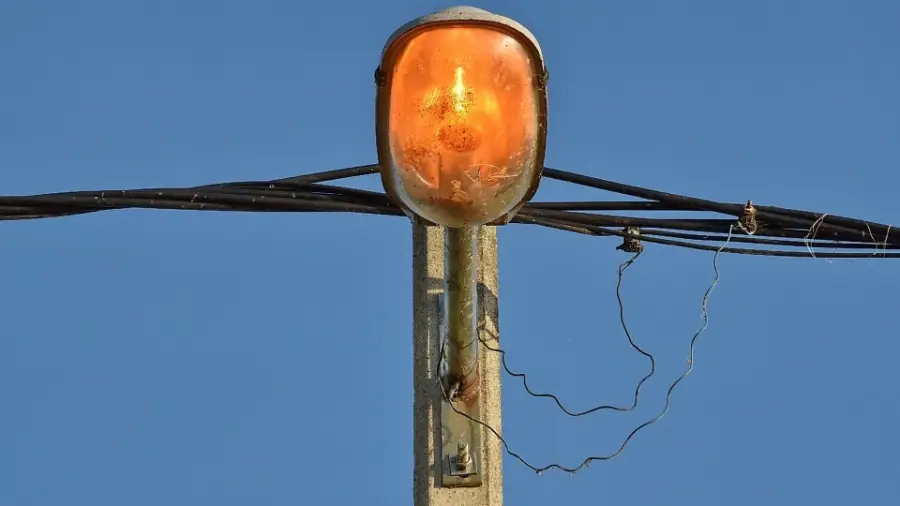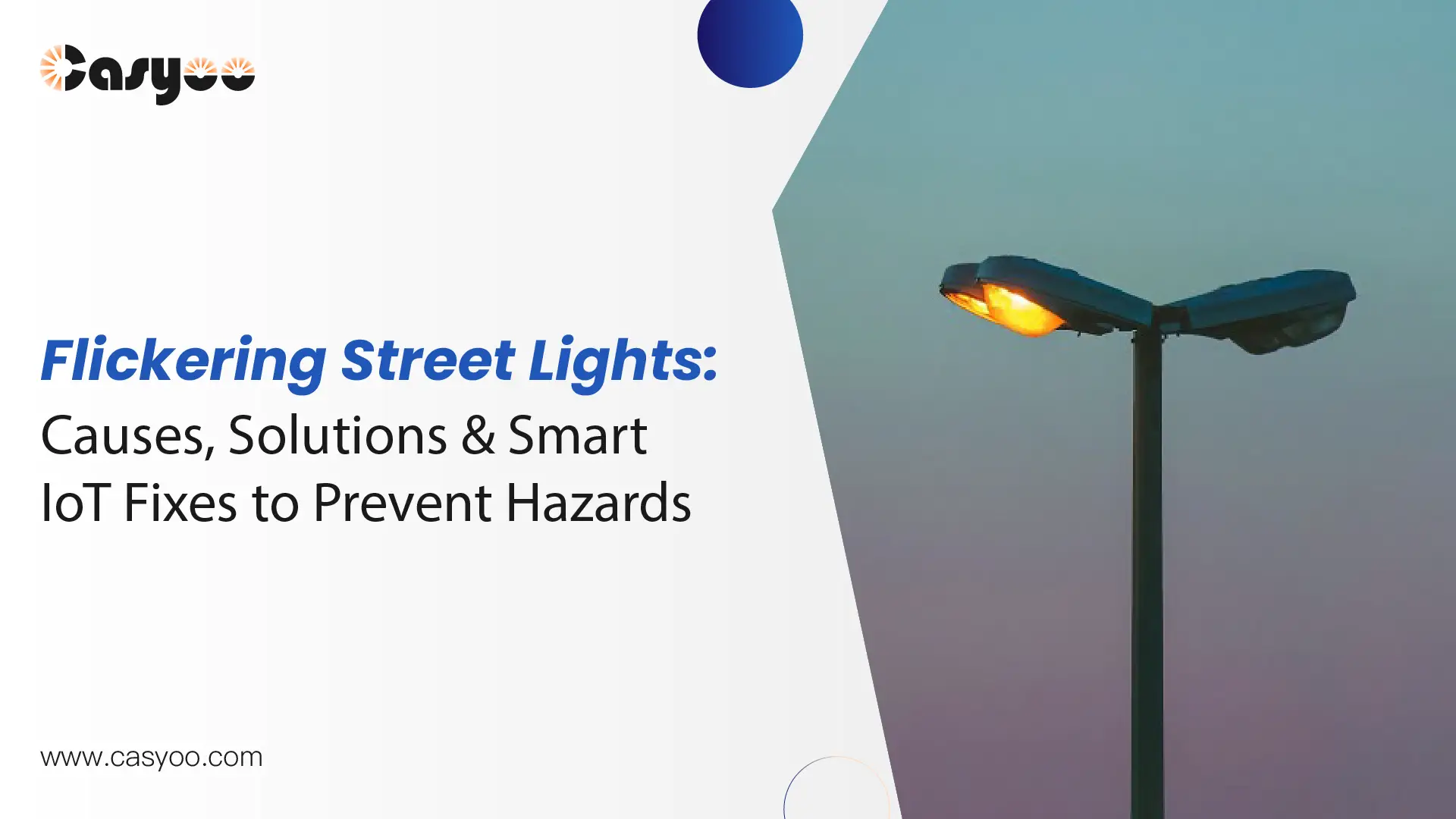When walking down a dark road, have you ever observed a street light flicker above you? While it can be joked about being a ghost or something paranormal, the truth is far less scary. Flickering street lights are not something unusual because of electrical issues, wear and tear caused by the environment, or outdated technology. While it seems like a minor problem, a malfunctioning street light can indeed be dangerous. In the following article, we will explore both the reasons behind street light flickering and correct remediation approaches.
The Hidden Dangers of Flickering Street Lights
- Safety risks
Street lights flashing can cause momentary blindness or adaptation issues of glare, especially for older drivers. It is also harder for drivers to spot pedestrians under flashing lights, especially in bad weather conditions. Good street lighting has been proven through research to deter road traffic accidents and injuries.
- Health impacts
Frequent eye strain combined with headaches and migraines develops when perceiving visual flickering at low frequencies which are less than 70 Hz. If continued exposure to flickering lights is experienced in residential or high-occupancy environments, it will have a negative effect on the population’s health.
- Economic costs
Bulbs have a reduced lifespan and maintenance expenses rise because of continuous flickering. The lack of proper lighting causes both energy consumption loss and increased public expenses.
Why Do Street Lights Flicker? (And How to Fix Them)
Electrical Issues
Cause 1: Voltage fluctuations, which may be caused by grid instability, weather interruptions, or changes in heavy loads, usually cause random flickering of the lights.
Solution 1: Regular voltage inspections with surge protector installation ensures both electrical feed security and light system protection.
Cause 2: Incompatible or low-quality LED drivers and LED chips with mismatched voltage and current ratings lead to unstable operation in the form of visible flicker.
Solution 2: After understanding what causes led lights to blink, project manager ought to buy LED fixtures from quality suppliers, ensure driver-chip compatibility, and perform quality inspections prior to and following installation.
Light Source Problems
Cause 1: Older lamps, i.e., metal halide or high-pressure sodium lamps, will flicker when they are nearing the end of their service life.
Solution 1: Be proactive. Implementing a routine lamp replacement program based on the manufacturer’s service life will prevent flicker caused by worn-out bulbs.
Cause 2: LED driver issues or mismatched chips also cause flickering, as they result in unstable supply and performance.
Solution 2: Purchase LED fixtures from trusted companies then check driver-chip alignment before performing quality inspections before and after installation.
Control System Failures
Cause 1: The photocell sensors may be faulty because of reasons such as dust accumulation, improper installation, or internal failure, which may result in unpredictable lighting operation and flickering.
Solution 1: Regular cleaning of the photocell sensors, other than replacement of defective units and correct alignment at the time of installation, will ensure consistent performance.
Cause 2: Communication breakdowns between smart lighting control systems—be it failure of feedback loops or gateway failure—can also result in flickering street lamp.
Solution 2: The system operation depends on both scheduled firmware updates, diagnostic checks, and immediate remediation of communication breaks.
Environmental Factors
Cause 1: Street light fixtures become vulnerable in conditions of heavy rainstorms and strong winds. These events lead to fixture destruction, corroded wires, and water can enter the system causing flickering.

Solution 1: To avoid weather complications, we need to employ weatherproof and rust-proof materials in streetlights and conduct post-storm inspections to check whether the system is still intact.
Cause 2: Flickering can also be caused by outside interference in the way of overgrown vegetation, animals (such as rodents or birds that gnaw on cables), or even construction activity nearby, all of which can interfere with regular lighting function.
Solution 2: The risks can be reduced through frequent vegetation maintenance, cable protection, and safe construction practices that avoid cable damage.
Traditional vs. LED Street Lights Flickering
Most municipalities are encouraging the substitution of conventional street lights with LED luminaires. In practice, however, both LED and conventional street lights are still susceptible to flickering problems.
Conventional HPS/mercury vapor streetlights are run on ballast-controlled AC power, which may generate flicker at 100-120 Hz (doubled mains frequency). With the use of older magnetic ballasts that supply inefficient power control, flicker percentages can be higher.
LED street lighting systems use electronic drivers to convert AC to DC power while poor-quality ones can generate flicker rates above 100Hz. In addition, certain LED light beads undergo low-quality production procedures, and this may lead to loose contact or overheat that will make them flicker.
What Kind of LED Street Lights Resist Flickering?
Though both LED and conventional street lights can flicker, LED street lights are anyway more energy-efficient and safer. Besides, choosing certified quality LED street lights alone can significantly reduce the problems of flicker. Flicker-resistant good quality LED street lights generally have the following features:
- High-Quality LED Drivers: Choose lighting fixtures that have reliable drivers which are certified and include power factor correction (PFC), constant current output and surge protection.
- Voltage Tolerance: Durably constructed LED street lights have extensive input voltage capabilities that protect power fluctuations while remaining flicker-free.
- Enhanced Thermal Management: A combination of heat sinks with proper thermal design protects devices from excessive temperature to avoid driver malfunction while resolving flicker issues.
- Weatherproof and Sealed Designs: The water and dust protection systems of IP65 rating fixtures deliver dependable performance in harsh outdoor environments.
Future IoT Smart Solution for Flickering Street Light
Smart lighting control nodes along with IoT technology upgrades makes manual street light inspection unnecessary. The smart system addresses the led street light blinking problem in the following manner:
- Predictive maintenance: Lighting systems swiftly trace different parameters through sensory equipment to predict equipment failures in advance.
- Real-time communication: Intelligent nodes can report lighting status, for example, flicker, outage, and unusual power consumption in real-time via wireless networks (Zigbee, LoRaWAN, or cellular).
- Remote diagnostics: The automated maintenance alert systems activated by flickering led lights guide repair personnel to address operational disturbances before possible public detection.
With the installation of intelligent photocontrol systems, cities can identify and fix led light flicker in its inception, which is both cost-effective and enhances citizen satisfaction.
International Standards for Street Light Flicker
Street light flicker is controlled variably per nation, with the majority of regions adopting IEC/EN standards or establishing local regulations. The key regulatory factors are:
- Flicker percentage (typically ≤0.5–5%)
- Frequency ranges (100Hz–3kHz for perceptual limits)
- Power quality compliance (e.g., harmonics, voltage stability)
EU standard EN 13201-4:2021 establishes maximum SVM values at ≤0.9 for residential zones and ≤0.4 for school and hospital proximity areas when considering entire light quality parameters for setting flicker amplitude limits. IEEE 1789-2015 in the United States demands flicker frequencies ≥90Hz for low-risk areas, with high-risk areas (e.g., roadways) demanding ≤5% flicker modulation.
How to Report A Flickering Street Light?
In most cases, a blinking street light can be reported to city authorities or public works departments. This is done by reporting to the concerned department through the phone or city reporting apps. The apps will most likely enable you to add pictures of malfunctioning street lights in addition to information such as pole number, location, and flicker patterns.
Do you need LED street lights that resist flickering and smart solutions against flicker? Contact Casyoo to access non-flickering compliant street lights together with customized project lighting solutions. You can initiate an inquiry with us right now!
Related Reading




